Breakfast in Brazil for Macif
Published on November 6th, 2015
(November 6, 2015; Day 12) – Francois Gabart and Pascal Bidégorry, skipper on the 100-foot Macif, are on the home stretch with no significant weather hurdles remaining on the 5400 miles Transat Jacques Vabre course which left Le Havre on Sunday 25th October.
At 1600hrs UTC this Friday afternoon they had 314 miles standing between their bows of Macif and the finish line in Itajaí. Second placed Thomas Coville and Jean Luc Nélias on Sodebo Ultim are 178 miles behind and have been averaging three knots slower than Macif which is making 27 to 28kts.
Barring any unforeseen circumstances, victory should be Macif’s in the early hours of Saturday morning. Skipper Francois Gabart, who won the Vendée Globe on his first attempt at just 29 years old in January 2013, said today that the final 40 miles into the finish line will be complicated, but their margin over second placed Sodebo Ultim’ should be enough to secure a maiden race victory.
Gabart’s 100-foot giant is two tonnes lighter than her rivals with a similar sail area. The Macif programme is planned as a five years odyssey for Gabart to collect as many solo records as possible. After a maiden sail only on 22nd August a victory on their first race would be a solid first endorsement on a race which claimed two of the four Ultime class starters.
While Gabart and Bidégorry should be enjoying their first Caipirinha cocktails before a well earned rest tomorrow, the IMOCA leaders are still in a tight flying V formation passing Fernando de Noronha island group this afternoon, Vincent Riou and Seb Col still leading, close reaching in 18kts trade winds. Riou’s concern is still the unresolved threat of Banque Populaire VIII which is 28 miles behind and on a lane slightly to leeward of PRB’s.
Since the escape from the Doldrums the leaders have been getting into the strengthening breeze first and so have remained quicker. And the wind angles are still too tight for the foils on Banque Populaire VIII to deliver an advantage. But as they fall under the influence of the South Atlantic high’s rotation there winds will back and lift them although they are likely to be lighter than what would be considered optimum for the foils to work best.
Tanguy de Lamotte and Briton Sam Davies (Initatives Coeur) still hold a solid fourth thirty miles ahead of fifth. And Davies’ compatriot Sam Goodchild, sailing with Eric Bellion, has profited in their four cornered trade winds drag race, getting up to seventh on Comme un Seul Homme Stand as One.
Class 40’s leaders Yannick Bestaven and Pierre Brasseur are banking sleep as they contemplate their Doldrums passage, now around 1 day ahead of the second placed V and B. In the Cape Verde Island’s the Solidaires en Peloton ARSEP duo Thibault Camus-Vauchel and Victorien Erussard are fighting to get their rudder gudgeon repaired or to swap their rudder fittings over and set off with one working rudder.
Vauchel-Camus explained: “We have two possible solutions. Ideally, the best is being able to rebuild the damaged parts in record time. Here we have the help of Antonio Pedro da Cruz, who raced on the Figaro and the Mini Transat, and knows everyone there is to know. But we are scrambling to find some solutions. Otherwise, we will swap the two rudder systems. We know that in 90% of the time, we will sail on port tack (with the wind coming from the left of the boat, ed.) That means that only the starboard rudder is working. So we will put the rudder to starboard and if there is no satisfactory technical solutions for port rudder, we will leave on just one rudder, it’s as simple as that.”
Race Director Sylvie Viant commented on the attrition rate in this edition of the race:
Has this race been that different from other ocean races?
“Seventeen boats have retired out of 42 at the start, which is a lot. But we have known worse than that, such as with the 2002 Route du Rhum, where among the ORMA trimarans, only three out of eighteen made it to Guadeloupe. This year it has been a problem for the IMOCA class, as the boats aiming for the non-stop solo round the world race have been the worst affected. Just as back in 2002 with the trimarans, who had to re-examine what had happened. It’s never that simple sailing out into the Bay of Biscay in the autumn. The conditions can be very tricky, but that usually affects the multihulls most.”
The monohulls have been the worst affected but the smaller Class40s have made it through three areas of low pressure…
“It is quite right we need to look at why boats designed for the Vendée Globe and solo sailing have been so affected, in spite of being sailed with two on board. There have been 11 boats retiring out of the twenty IMOCA monohulls: there are clearly worries about the solidity of the boat and their preparation.”
But within the IMOCA class, the reason for boats retiring has been very varied…
“Yes, it’s not the same thing for the new boats, which have thrown in the towel and what happened to Adopteunskipper.net, Bastide Otio or Le Bateau des Métiers by Aérocampus. For the latter, the equipment was well worn, because of the small budget and short preparation time. That is the case too for Spirit of Hungary, which was dismasted in 15 knots of wind, but which made it around the world in the spring… For the four new prototypes, which were forced to retire, there appear to be structural problems, which weren’t detected beforehand, due to the lack of sailing before the Transat Jacques Vabre: none of the five brand new boats had ever experienced rough seas like these. They will have to be reinforced before the Vendée Globe. But having said that, Banque Populaire VIII is one of the three frontrunners: it may be a question of learning how to sail these new machines that needs to be worked on.”
Has the result been so bad for the multihulls?
“For the Multi-50s, which are the most exposed in these conditions, only La French Tech-Rennes Saint Malo has been forced to retire, as she hit a container floating just under the surface. They made it through three lows without too many problems. As for the Ultimes, Prince de Bretagne capsizing seems to be linked to its design as an ORMA trimaran: when there are squalls, she isn’t a multihull that is easy to control. That hasn’t been the case for the other Ultimes and Actual retiring corresponds to the fact that the crew started to get to know the boat just a few weeks before the start and a part (the rod on the hydraulic jack) broke probably due to wear.”
Can we question the value of the foils?
“Probably not. But these boats have just been launched and some crews pushed the boats very hard. They are going to analyze their use depending on the weather. But the teams are not saying much about the damage. In the end, this is a good warning for the IMOCA class and the racers, as next year in Les Sables d’Olonne, they won’t be able to stop to repair, as they risk being disqualified. Their boats need to be perfectly prepared, whatever the weather. The Bay of Biscay could be even tougher next November.”
Class40 hasn’t been affected in the same way…
“When we look at why each boat retired, we can see the real reasons. For example, the Class40 Team Concise built in China was forced to retire two years ago in the Transat Jacques Vabre. Clearly there is a structural problem behind that, as there was once again delamination. Some Class40s stopped to carry out repairs, but for now, there are eleven crews racing out of the fourteen that set off.”
Were the weather conditions at the start of the Transat Jacques Vabre very hard in comparison to previous ocean races?
“There has been worse. But I was surprised by the reaction of some routers, who forecast a disaster… while Richard Silvani of Météo France presented the situation very well. Some skippers didn’t really want to set off, as they had been told there would be eight metre high waves or more. That’s something new coming from professional skippers, who have sailed and are going to sail solo once again around the world… In the past it has tended to be the amateur racers in Class40, who have been worried, when gales were forecast in the Channel. Particularly as there was plenty of space to the west or to the east.”
They said:
François Gabart, skipper of Macif (Ultime): “We are through the cold front at Cabo Frio, and now the weather has changed, it is colder than it was yesterday when it was 40 degrees and bright sunshine. There will be no big weather changes to manage now, just squalls and gusts. We have strong winds coming in the afternoon and evening and will go fast. We will get to 40 miles from the finish at between 2200hrs and 2400hrs UTC and then the last few miles will be complicated. So we will arrive very late tonight.”
Vincent Riou, skipper of PRB (IMOCA 60): “We will pass the most westerly island of Fernando de Noronha. But the conditions now are good we are flat out, 18kts of wind some small chop, it slams a little. These are not really idea cruising conditions. But it does feel good to to be reeling down the mles. We are happy to be in front but the road is long. Banque Populaire VIII, if it were a normal IMOCA 60 I would be content and manage our lead, but we dont know what will happen with her speed. Once we get to Cabo Frio we lose the influence of the South Atlantic high and get into the smaller systems. The last 500-600 miles can be active and difficult, especially the approach to Itajai. The coastal passage off Brasil, 50-100 miles out can be busy with cargo shipping, fishing boats and there are platforms so there is plenty of spice left.”
Pierre Brasseur, co-skipper of the Le Conservateur (Class40): “It is dropping but we still have wind but we are getting well into the Doldrums. There are blue skies and a little cloud but it is not too thick. I think we will be well into it tomorrow. It is not too hot yet. We are starting to get a bit tireder. It gets harder all the time to get up for your watches as each day passes. We will try to take advantage just now and get more rest. It’s a shame for Solidaires en Peloton. It was a good game. Now there are little groups scattered all over the Atlantic. I hope their stopover in the Cape Verdes works for them.”
Race website – Tracker – Facebook
12th edition of the Transat Jacques Vabre in brief
• A legendary race 22 years old and 2015 marks the 12th edition
• Two founding partners: the city of Le Havre and brand Jacques Vabre
• Four classes on the starting line: Class40, Multi50, IMOCA and Ultimate
• Starting October 25 in Le Havre (FRA) for the 5400nm course to Itajaí (BRA)
Report by event media.


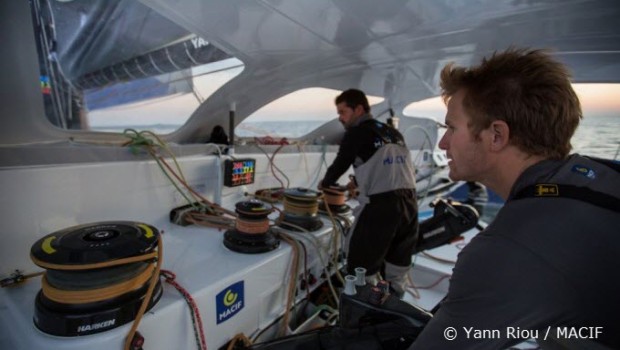

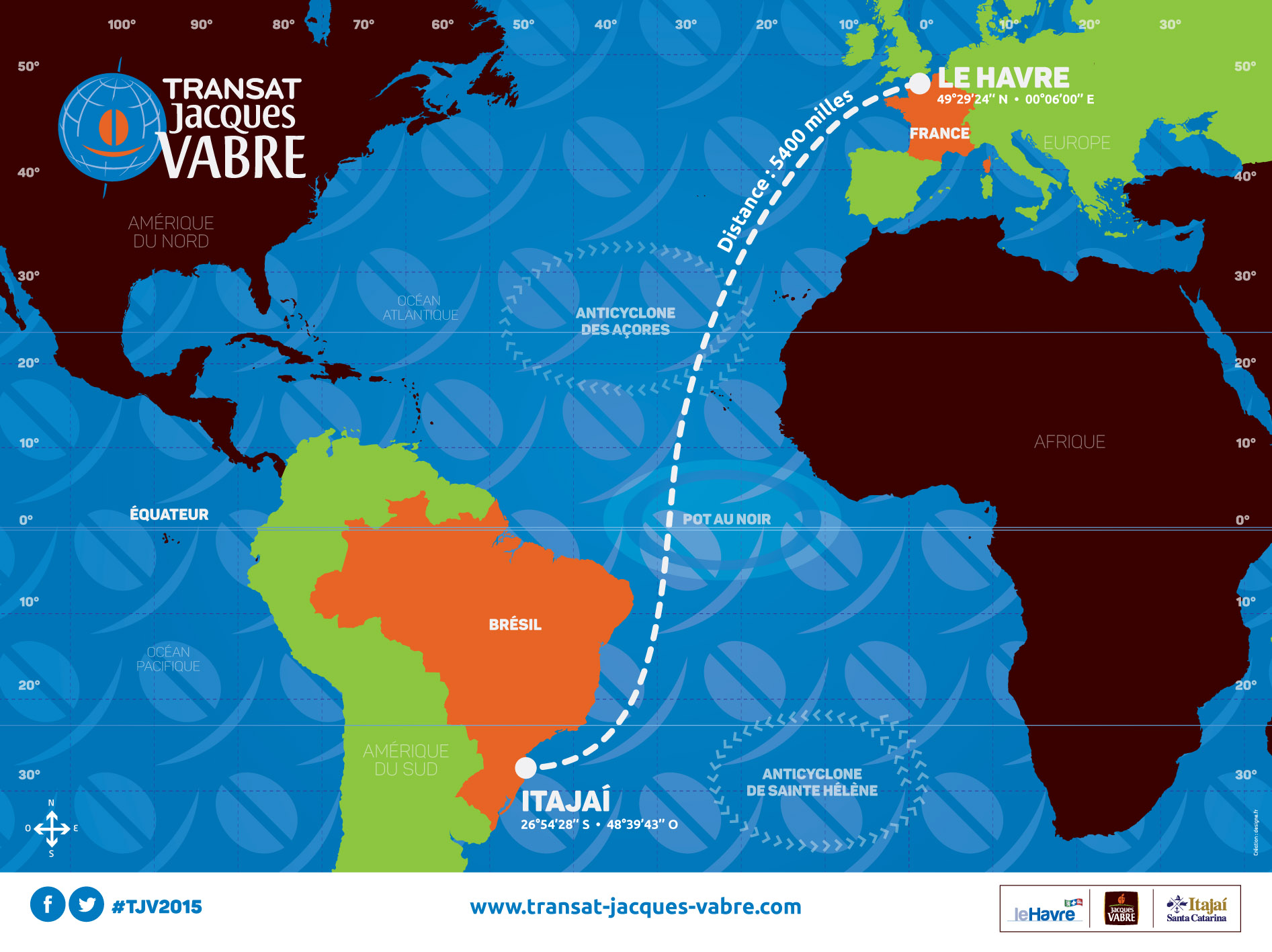

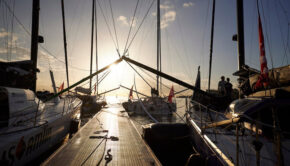
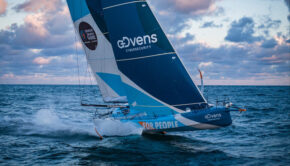
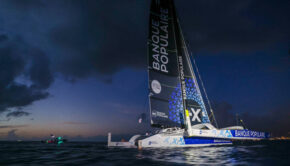
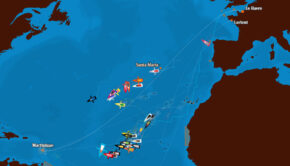
 We’ll keep your information safe.
We’ll keep your information safe.